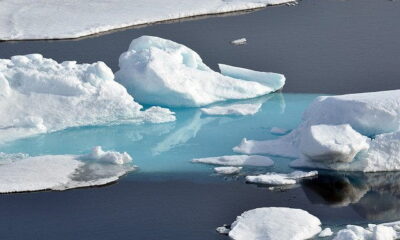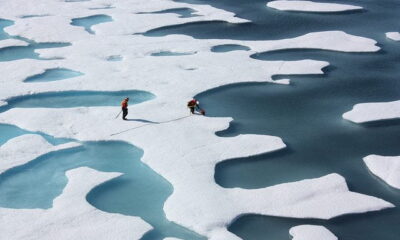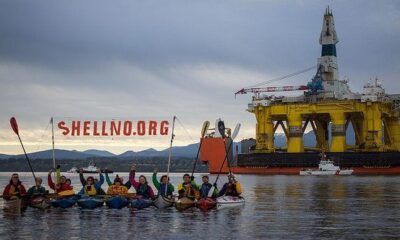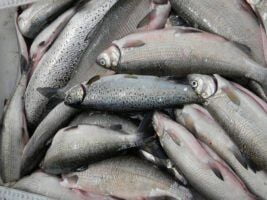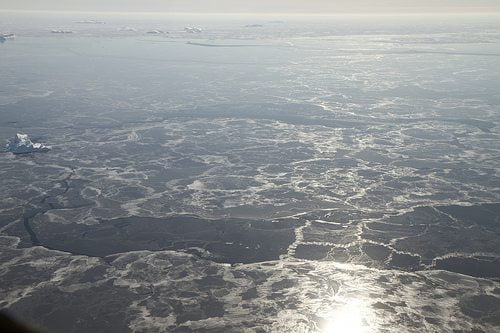

Environment
“Sustainable” Fish from Major Consumer Brands Linked to Arctic Destruction
A new Greenpeace investigation reveals that fishing fleets that supply major UK and European consumer brands are using giant bottom trawlers in the northern Barents Sea around Svalbard, an area known as the ‘Arctic Galapagos’. The research implicates the suppliers of well-known brands Birdseye, Findus and Young’s, as well as of fish & chips shops across the UK, where around 95% of the cod sold is caught in the Barents Sea or off Iceland. Many of these brands proudly display their commitment to sustainability on their packaging.
Researchers used satellite data and field work to track an increasing number of bottom trawlers operating in the northern Barents Sea, an ‘ecologically significant’ area according to scientists. The region, which includes the Svalbard archipelago, is home to vulnerable species including the polar bear, bowhead whale and Greenland shark.
Commenting on the report, Greenpeace campaigner Trillia Fidei said: “Climate change is opening up whole areas of the Arctic for the very first time. Some companies see this as a business opportunity, but we think it’s a chance to protect a fragile ecosystem before it’s too late. We cannot destroy a marine environment that we don’t even understand.”
“Some of the world’s biggest seafood brands are unwittingly buying cod from this vulnerable area. We’re asking them to get tough with their suppliers to ensure the northern part of the Barents Sea is off limits to giant fishing bottom trawlers.”
Bottom trawling is a highly destructive fishing method, which is already responsible for damaging up to half of Norway’s cold water corals reefs. At least 70% of all the Atlantic cod that ends up in supermarkets around the world is from the Barents Sea. Greenpeace says that any company buying cod from the Barents Sea risks having their supply chain tainted with Arctic destruction.
Marine conservation biologist Professor Callum Roberts was shown an early copy of the report. He said: “Bottom trawling is one of the most destructive methods of fishing. Over the last 200 years it has converted once rich and complex seabed habitats to endless expanses of shifting sands and mud. Areas of the Arctic protected by sea ice represent one of the last pristine refuges from trawling and need urgent protection to prevent them from suffering the same fate.”
Greenpeace is calling on fishing companies to stop fishing in the northern Barents Sea and the waters around Svalbard, and for retailers, food brands and processors to no longer use suppliers that engage in destructive fishing in these waters. Greenpeace is also calling on the Norwegian government to create a ‘Marine Protected Area’ in the northern Barents Sea and the waters around Svalbard off limits to all extractive uses.
Trillia Fidei continued: “Norway takes great pride in its environmental credentials, but is doing nothing to stop an ecological crime unfolding on its own doorstep. The Norwegian government should put as much effort into protecting this part of the Barents Sea as it invests in protecting rainforests in other countries.”
Greenpeace has turned its attention to the fishing industry after running a high profile campaign against oil drilling in the Arctic Ocean. Last year the environmental group celebrated after Shell abandoned a $6bn project in Alaska, following a series of mishaps and widespread public opposition.


 Environment10 months ago
Environment10 months agoAre Polymer Banknotes: an Eco-Friendly Trend or a Groundswell?

 Environment11 months ago
Environment11 months agoEco-Friendly Home Improvements: Top 7 Upgrades for 2025

 Features9 months ago
Features9 months agoEco-Friendly Cryptocurrencies: Sustainable Investment Choices

 Features10 months ago
Features10 months agoEco-Friendly Crypto Traders Must Find the Right Exchange
